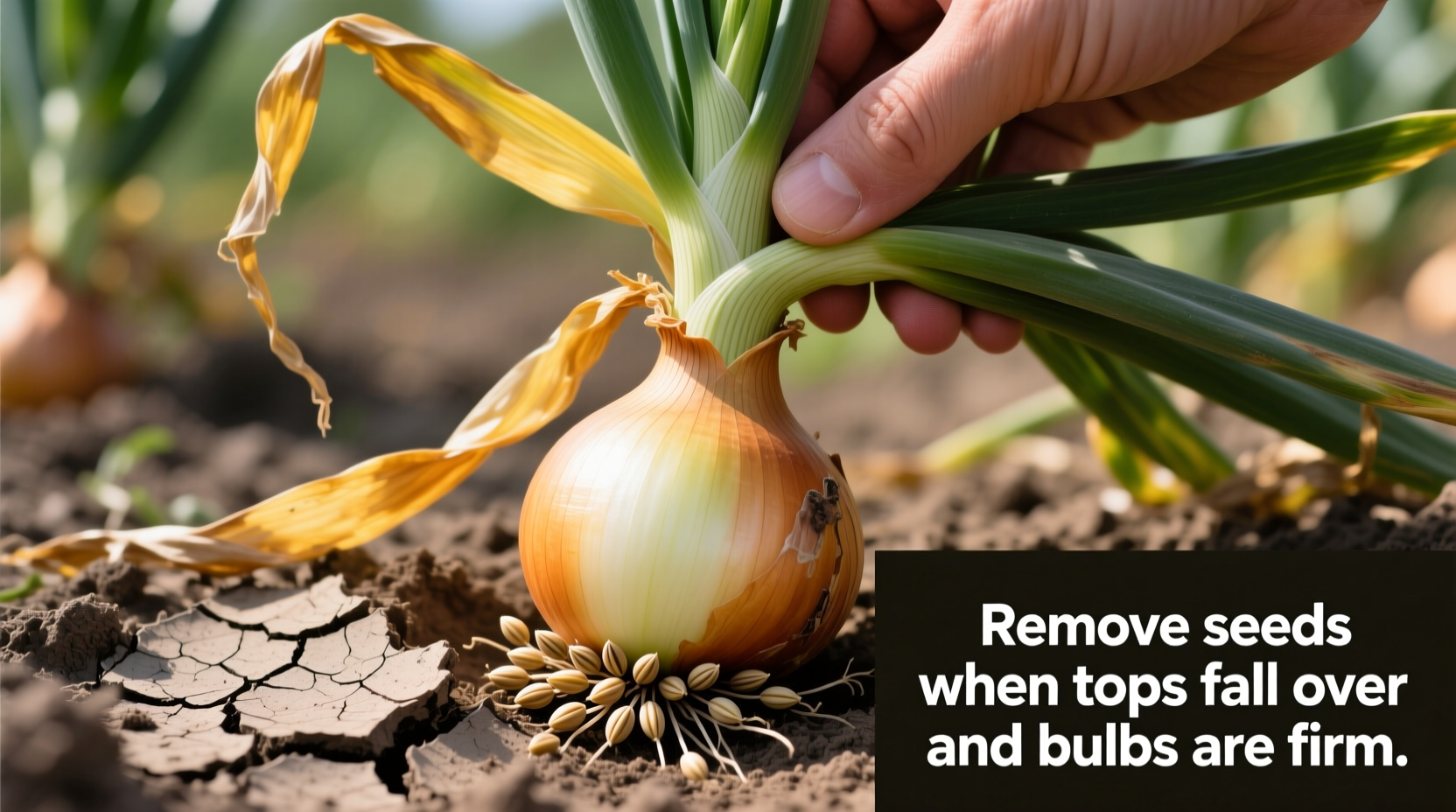Discovering unexpected flower stalks on your onion plants can be confusing. Many gardeners wonder whether to let them develop or remove them immediately. Understanding the precise timing and method for seed stalk removal ensures you maximize your onion harvest while maintaining plant health.
Why Onion Seed Stalks Form and What They Mean
Onions are biennial plants that naturally produce seeds in their second growing season. However, stress factors often trigger premature flowering (bolting) in the first year, including:
- Temperature fluctuations (especially cold snaps)
- Inconsistent watering patterns
- Poor soil nutrition
- Planting mature sets instead of seeds
When seed stalks emerge, they signal the plant is shifting energy from bulb development to reproduction. This biological process directly impacts your harvest size and quality.
| Seed Stalk Stage | Optimal Action | Impact on Bulb Size |
|---|---|---|
| First appearance (6-8" tall, soft green) | Remove immediately | Minimal impact (90-100% potential) |
| Flower head visible but closed | Remove within 24 hours | Moderate impact (70-80% potential) |
| Flowers open | Too late for current season | Significant reduction (50-60% potential) |
The Critical Timing Window for Seed Removal
University of California Agriculture and Natural Resources research confirms that removing seed stalks within 24 hours of their appearance preserves 90% of potential bulb size. Waiting just 72 hours reduces harvest yield by approximately 25% as the plant establishes seed production pathways (UC ANR, 2023).
Regional variations affect timing:
- Cooler climates: Seed stalks often appear in late spring after temperature fluctuations
- Warmer regions: Bolting may occur earlier in the season, sometimes as early as April
- Overwintered plants: Typically bolt in early summer regardless of climate

Step-by-Step Seed Removal Process
Follow these professional techniques for effective seed stalk management:
- Identify early signs: Look for a central, round stalk emerging from the center of the plant (distinct from flat leaf blades)
- Gather tools: Use clean, sharp pruning shears or a knife (disinfected with 10% bleach solution)
- Cut properly: Remove the entire seed stalk at soil level without damaging surrounding leaves
- Monitor recovery: Water lightly and apply balanced fertilizer to redirect energy to bulb development
- Prevent regrowth: Check plants every 2-3 days as some varieties may produce secondary stalks
Cornell University Cooperative Extension notes that certain onion varieties like 'Walla Walla' and 'Sweet Spanish' are particularly prone to bolting, requiring more vigilant monitoring (Cornell Horticulture, 2024).
Consequences of Delayed Seed Removal
Allowing seed stalks to develop beyond the soft green stage triggers irreversible changes in the plant's energy allocation. USDA agricultural studies show that mature seed heads can reduce final bulb size by 30-40% compared to promptly pruned plants (USDA Plant Research, 2022).
Additional negative impacts include:
- Smaller, less dense bulbs with reduced storage capability
- Increased risk of disease entry through the hollow seed stalk
- Premature plant senescence (early die-back)
- Reduced quality in subsequent growing seasons for perennial varieties
When to Keep Onion Seeds
While most gardeners should remove seed stalks to maximize bulb production, there are specific scenarios where seed collection makes sense:
- Seed saving: If intentionally collecting seeds for next season's planting
- Perennial varieties: Some heirloom onions benefit from occasional seed production
- Research purposes: Documenting plant characteristics or breeding experiments
For successful seed harvesting, wait until seed heads turn brown and dry on the plant (typically 4-6 weeks after flowering). Collect seeds before they naturally disperse.
Preventing Future Onion Bolting
Proactive measures reduce seed stalk formation:
- Choose bolt-resistant varieties like 'Red Zeppelin' or 'Candy'
- Plant at proper soil temperature (50-75°F)
- Maintain consistent moisture levels (1-2 inches weekly)
- Avoid planting overwintered sets in spring
- Use mulch to regulate soil temperature
Remember that some bolting is inevitable in challenging growing seasons. The key is prompt action when seed stalks appear to minimize impact on your harvest.











 浙公网安备
33010002000092号
浙公网安备
33010002000092号 浙B2-20120091-4
浙B2-20120091-4